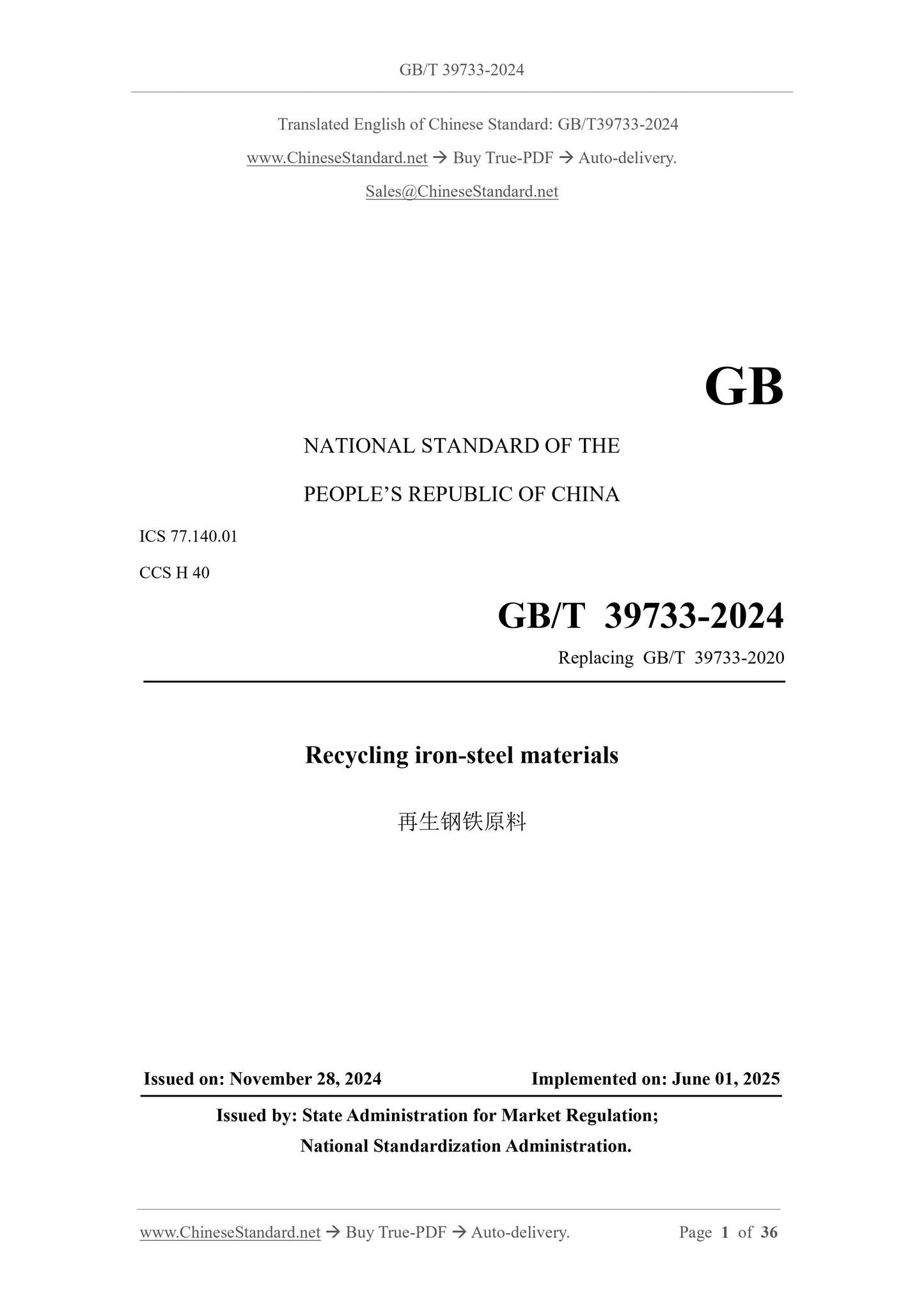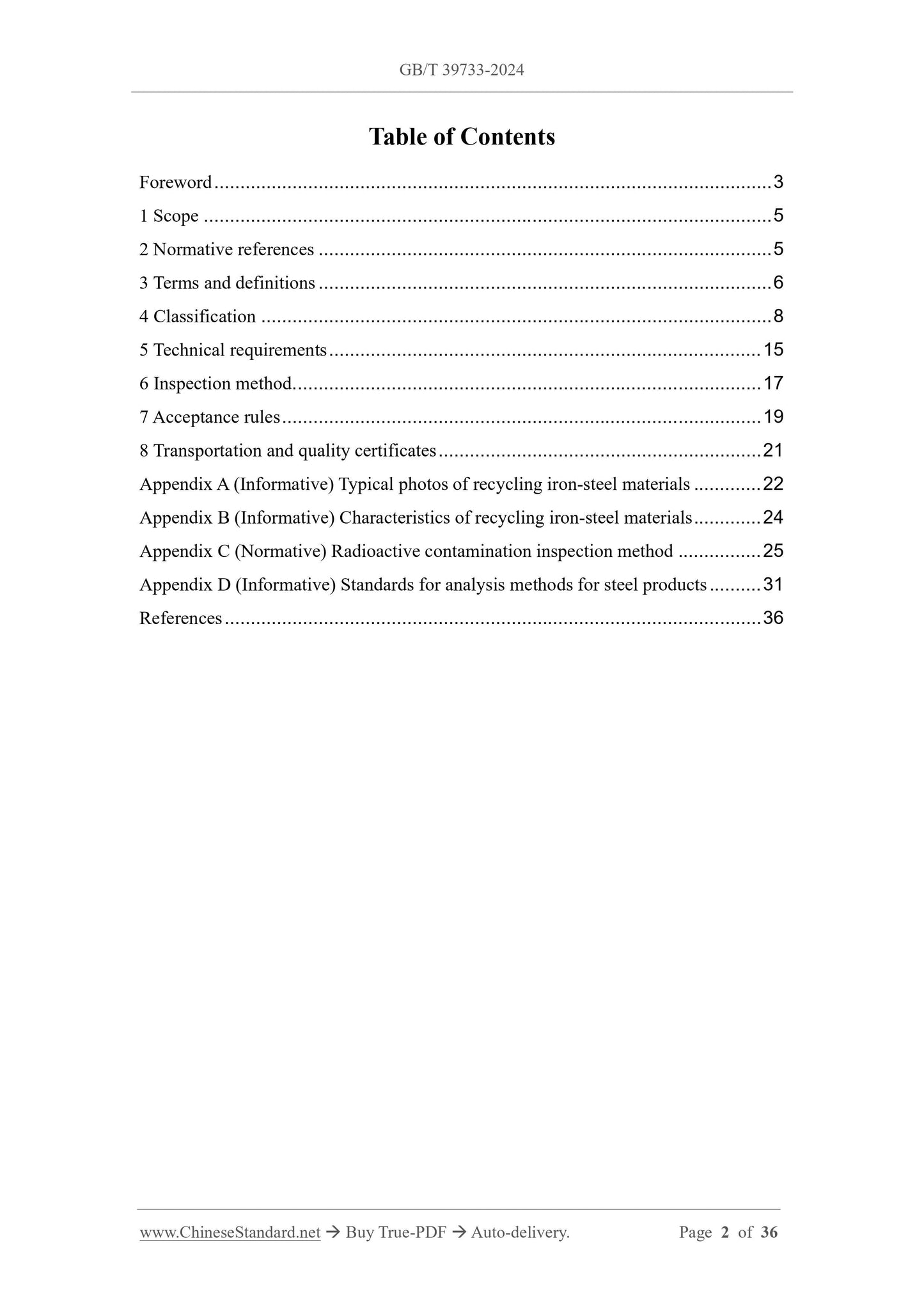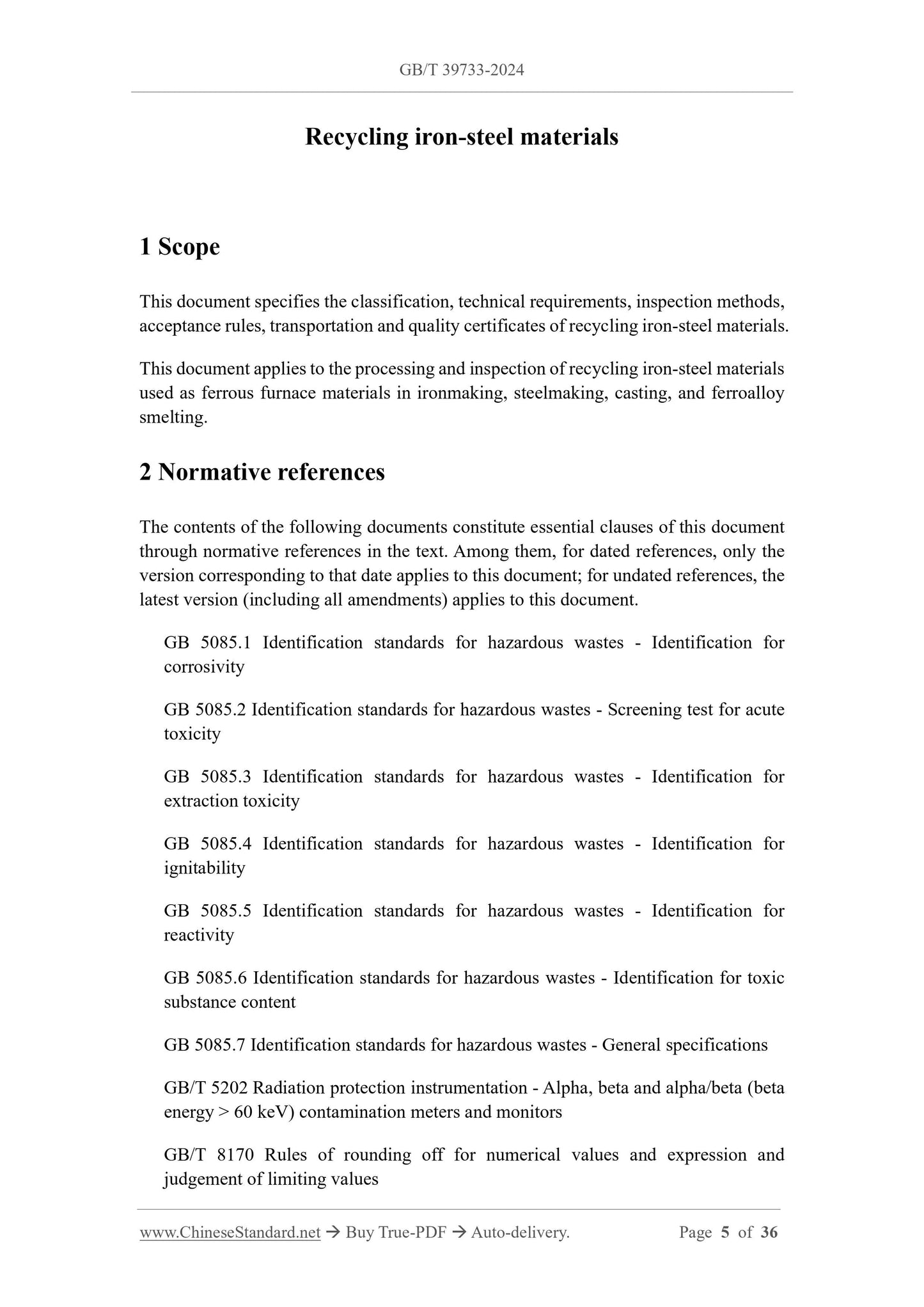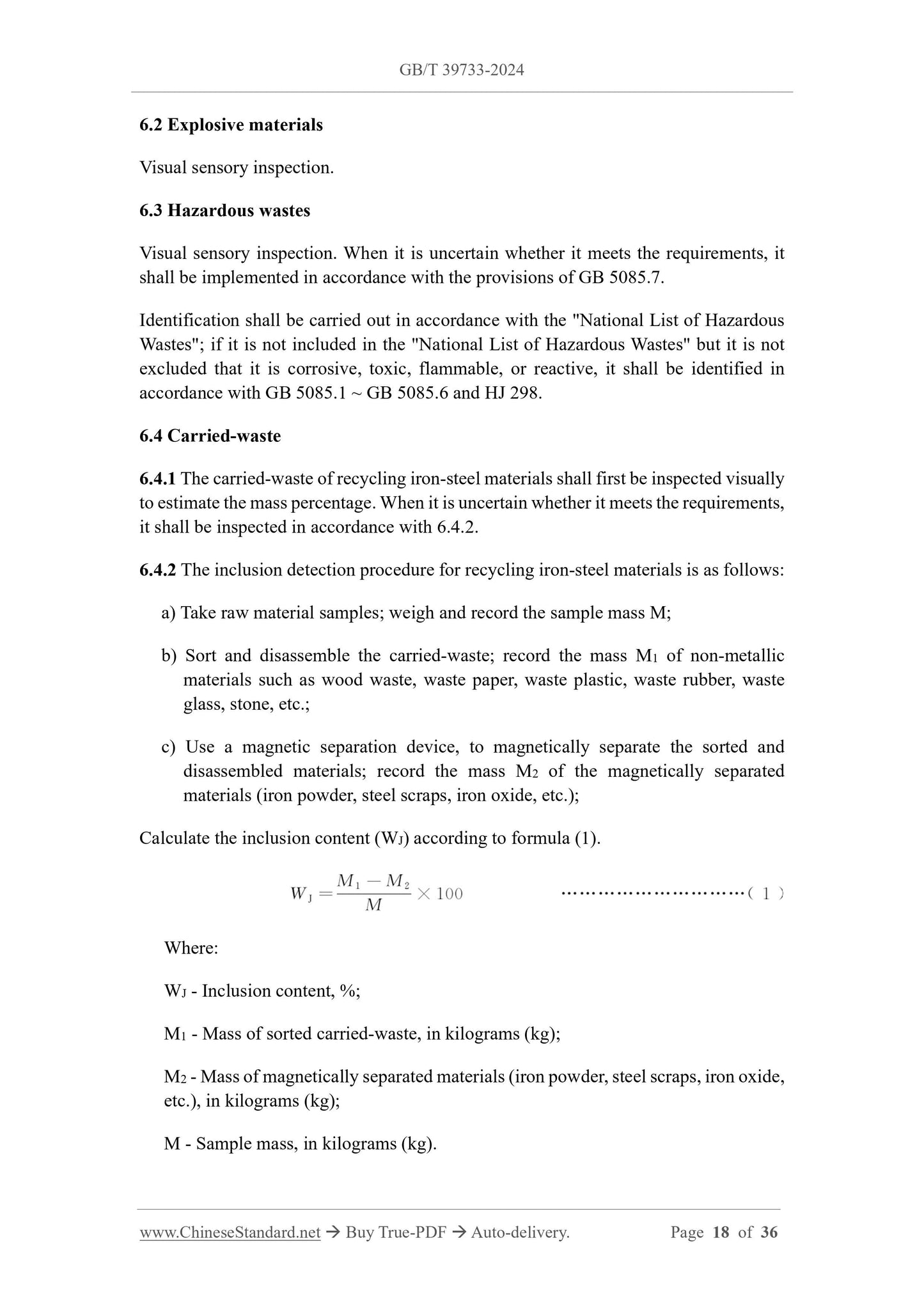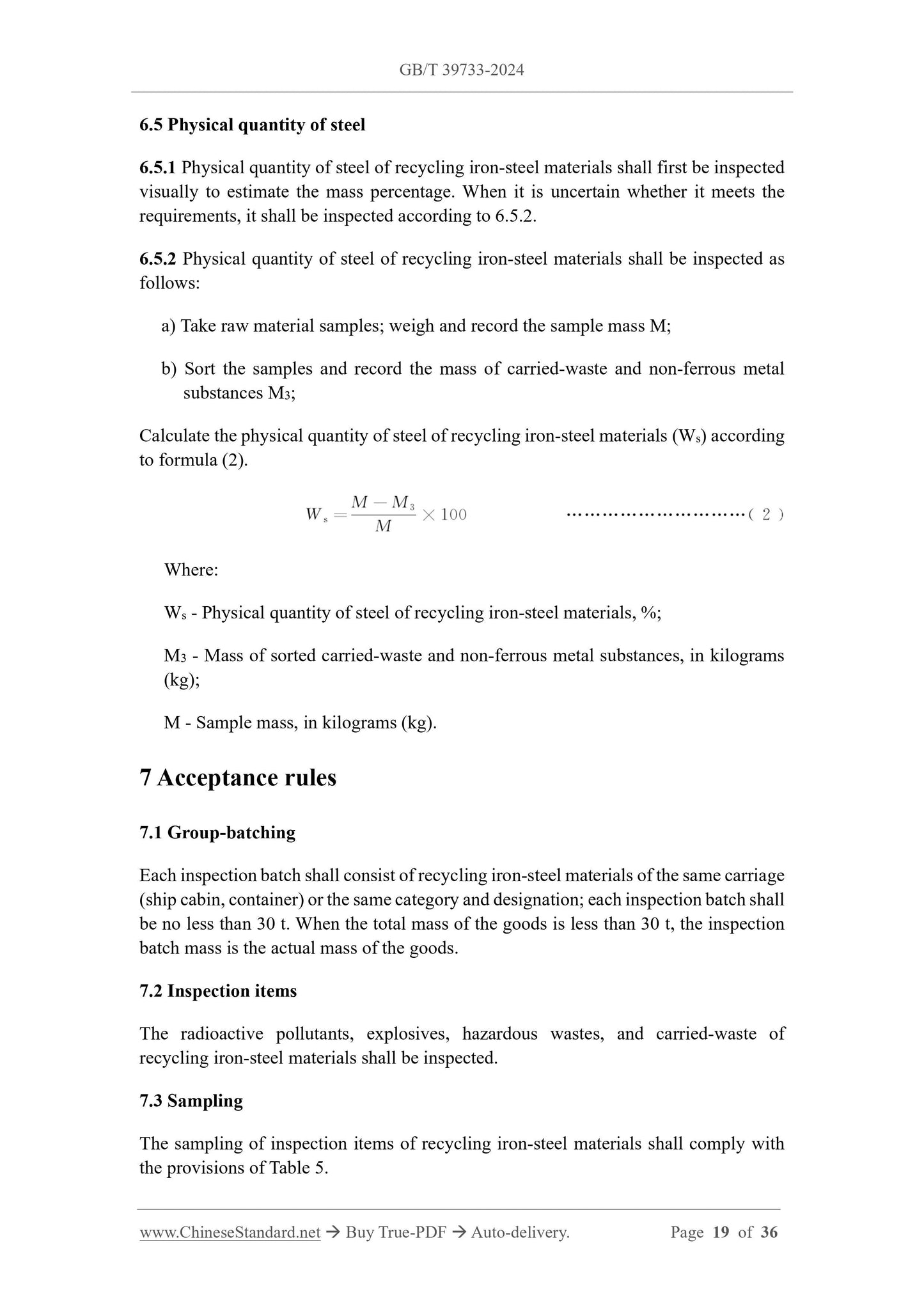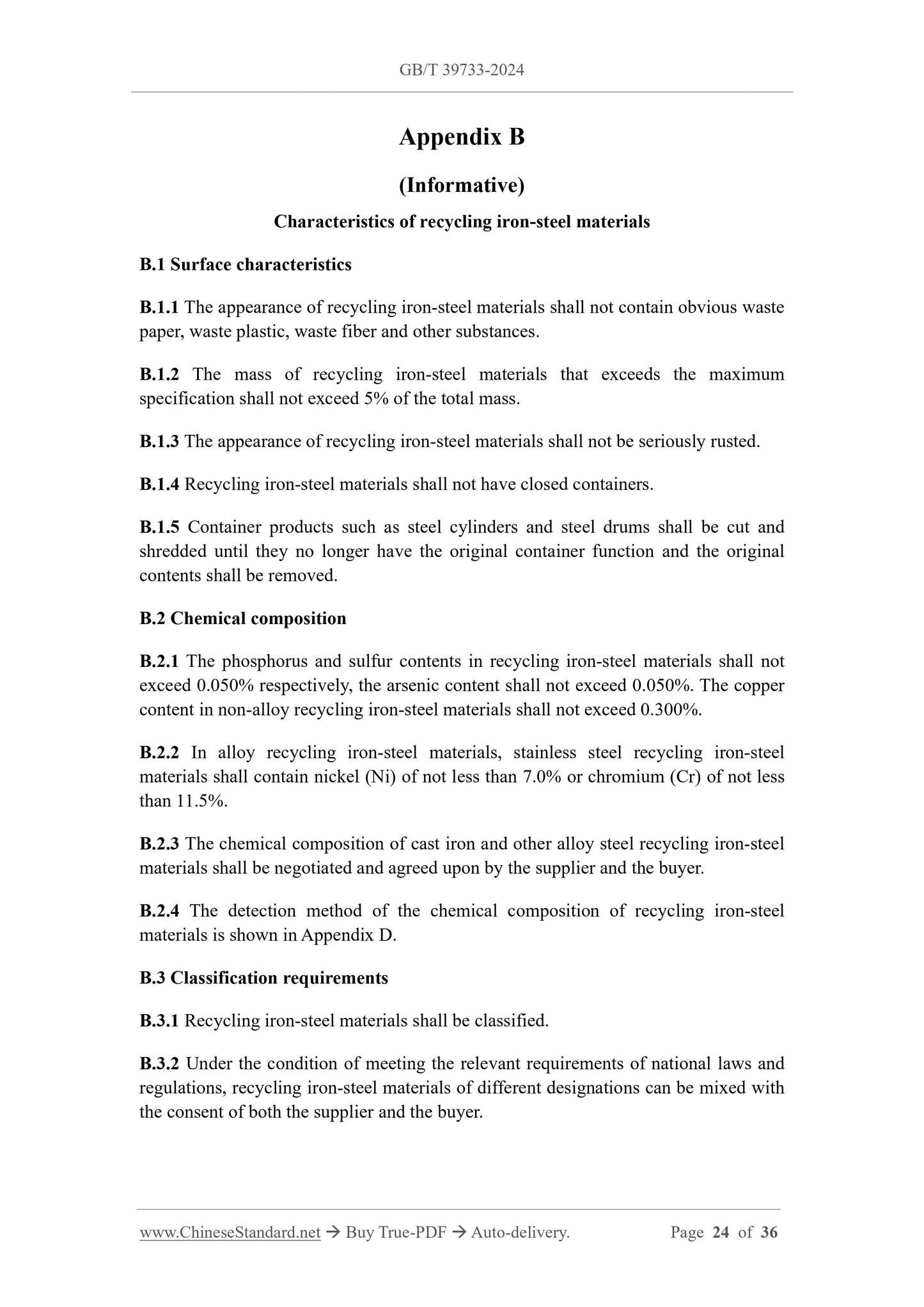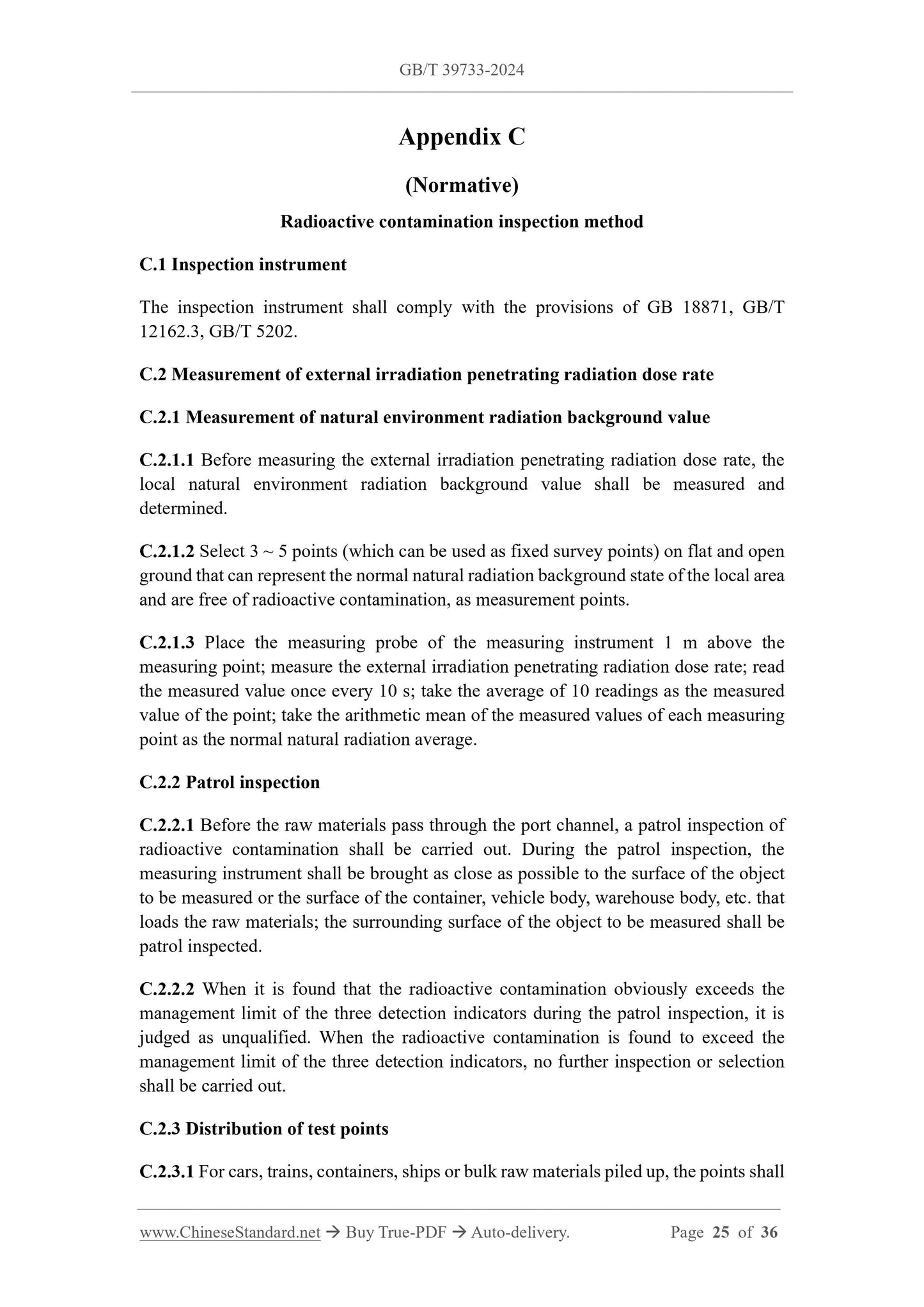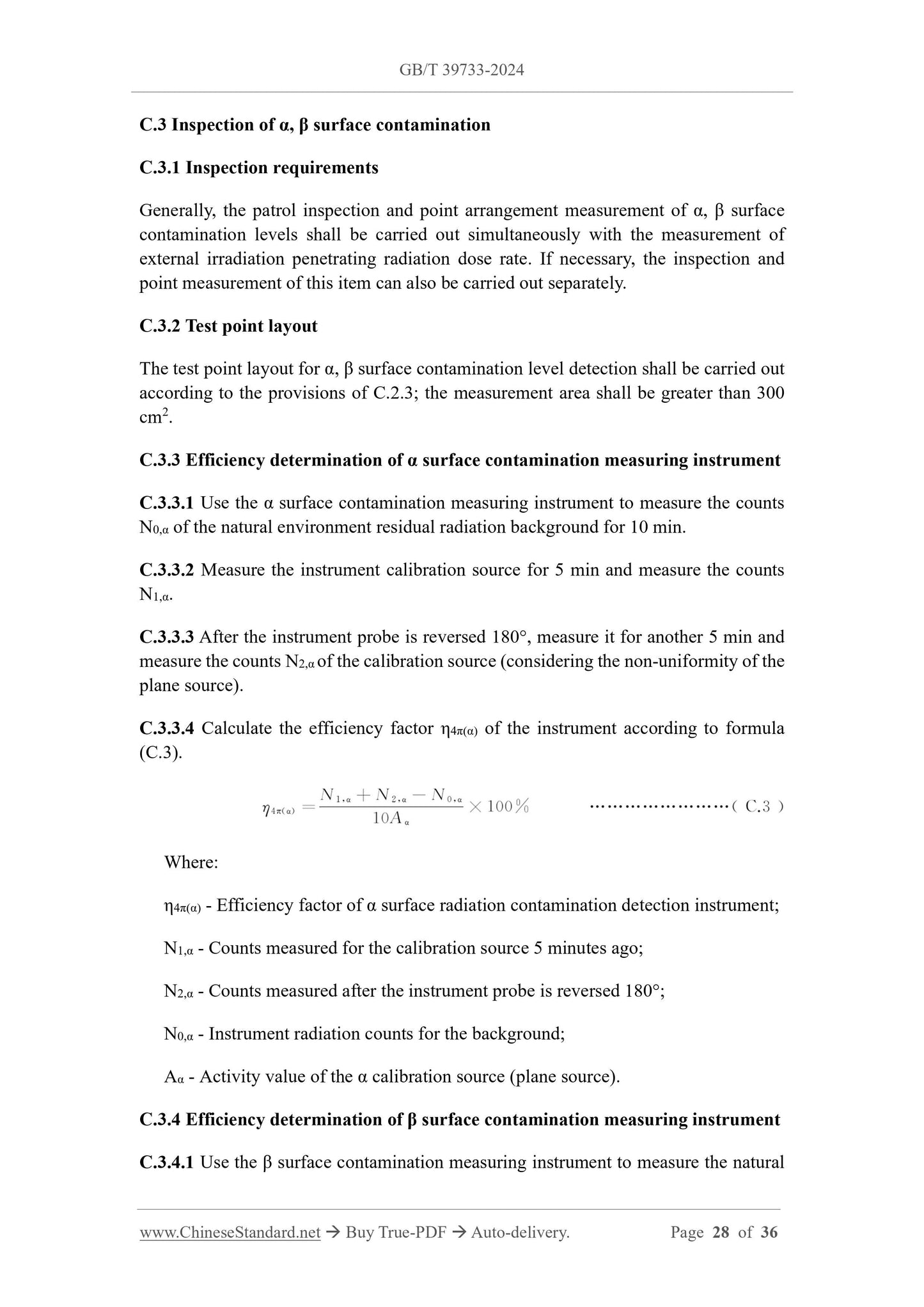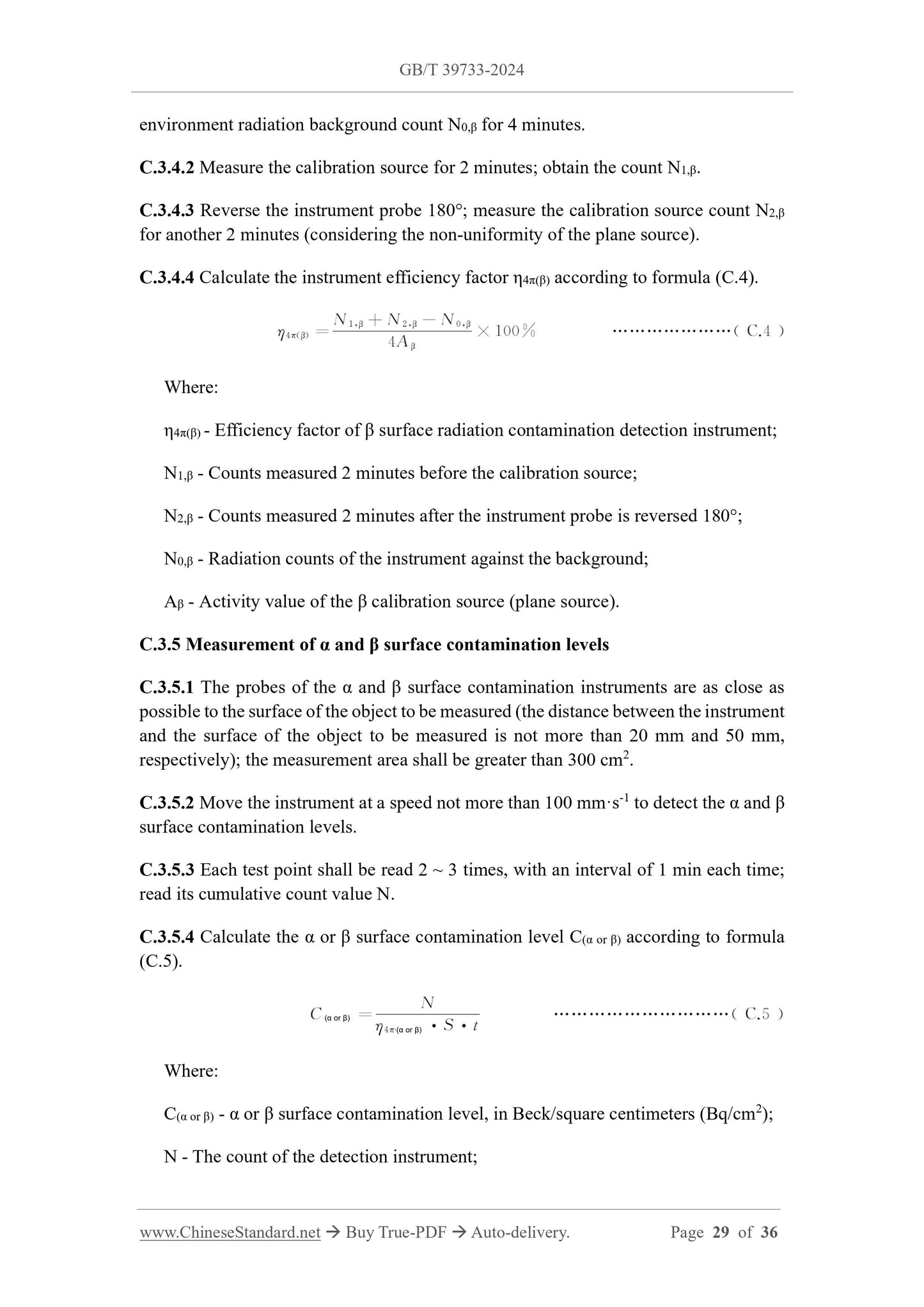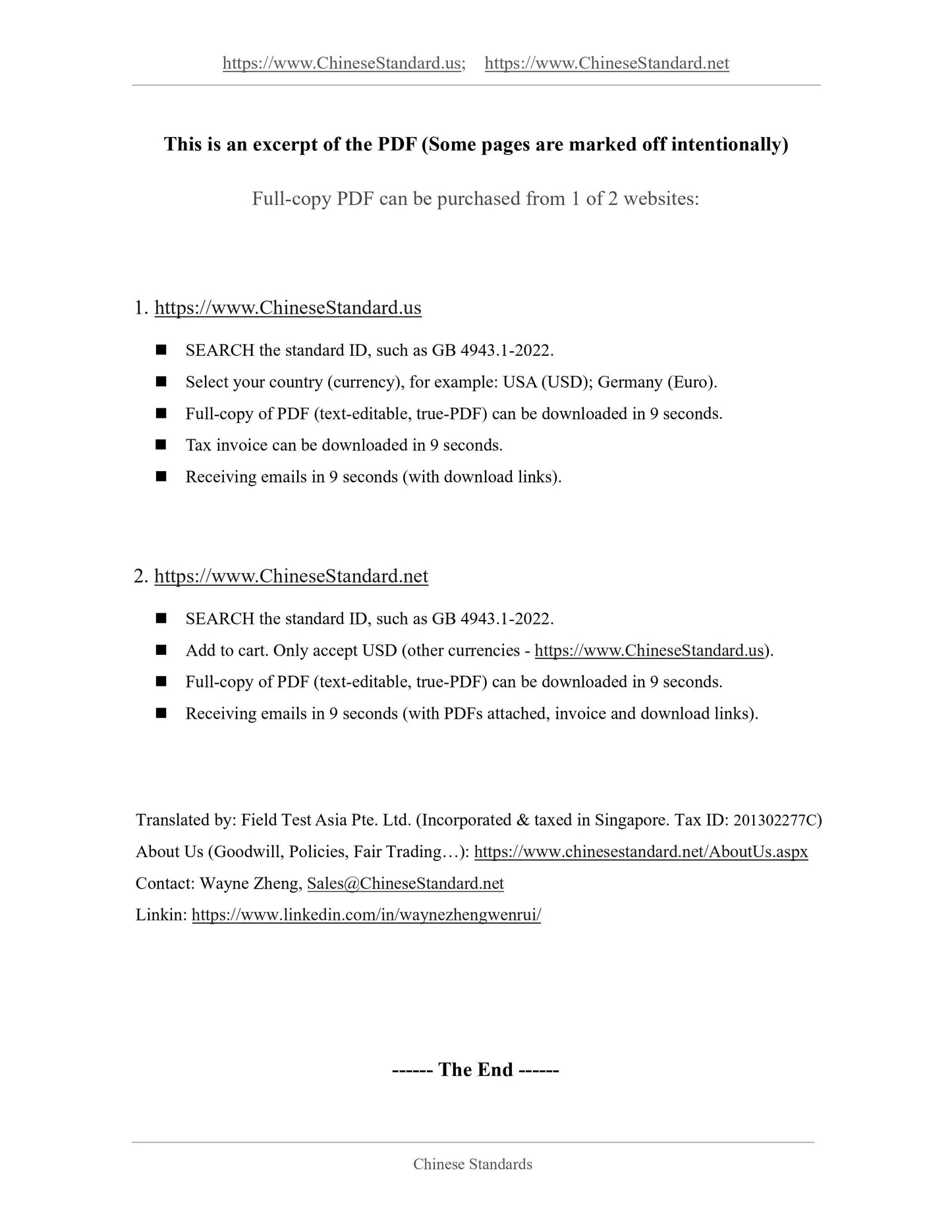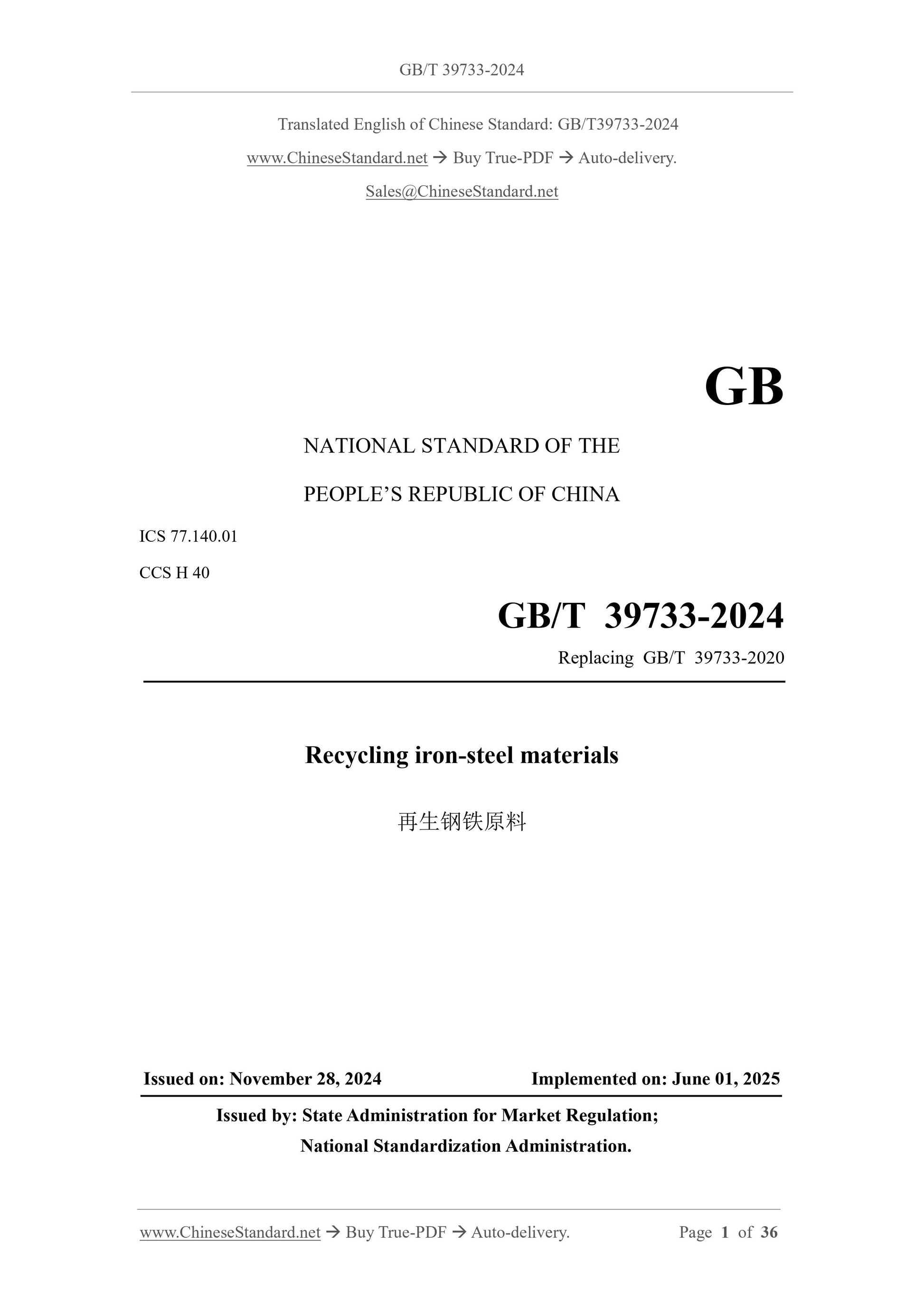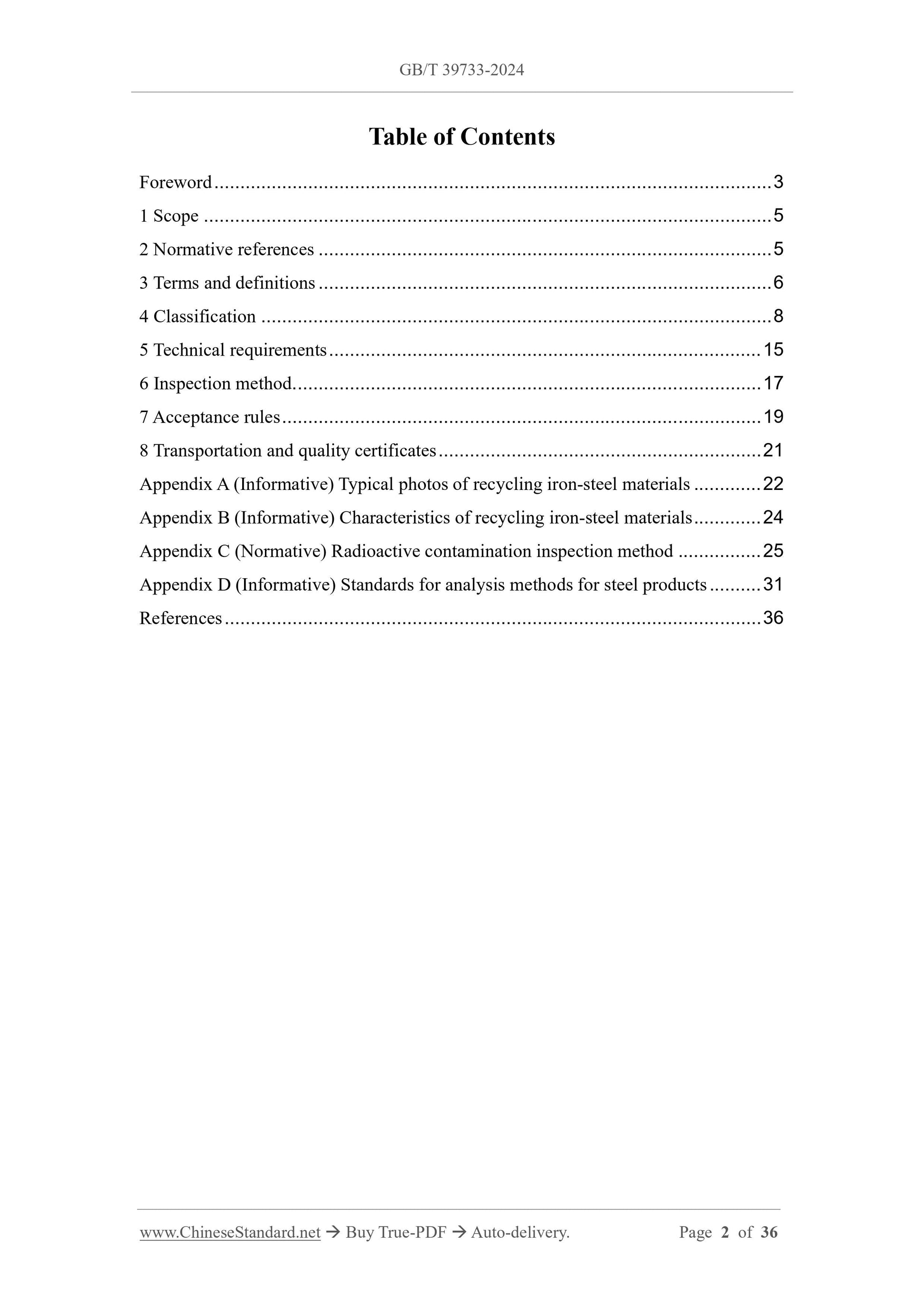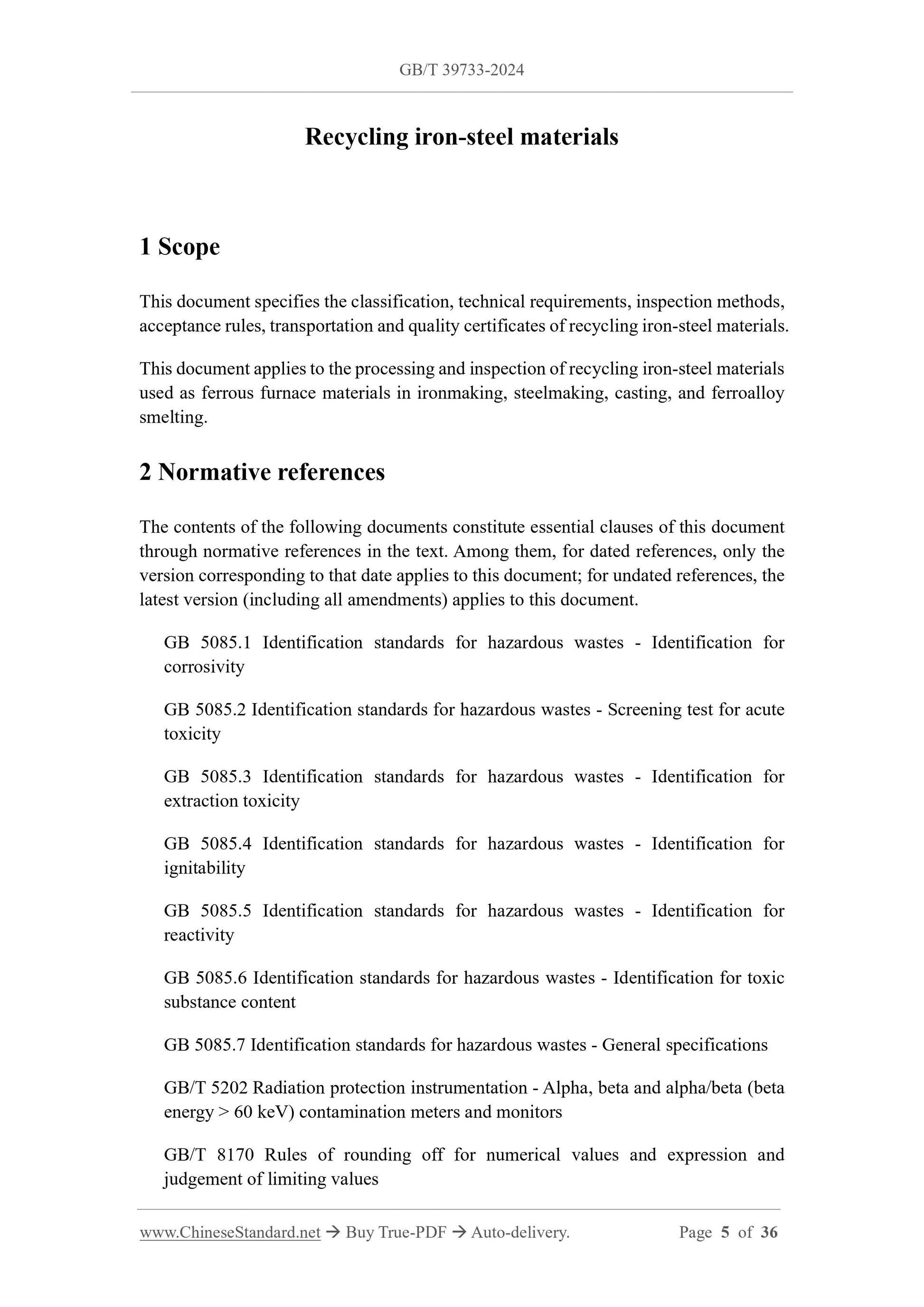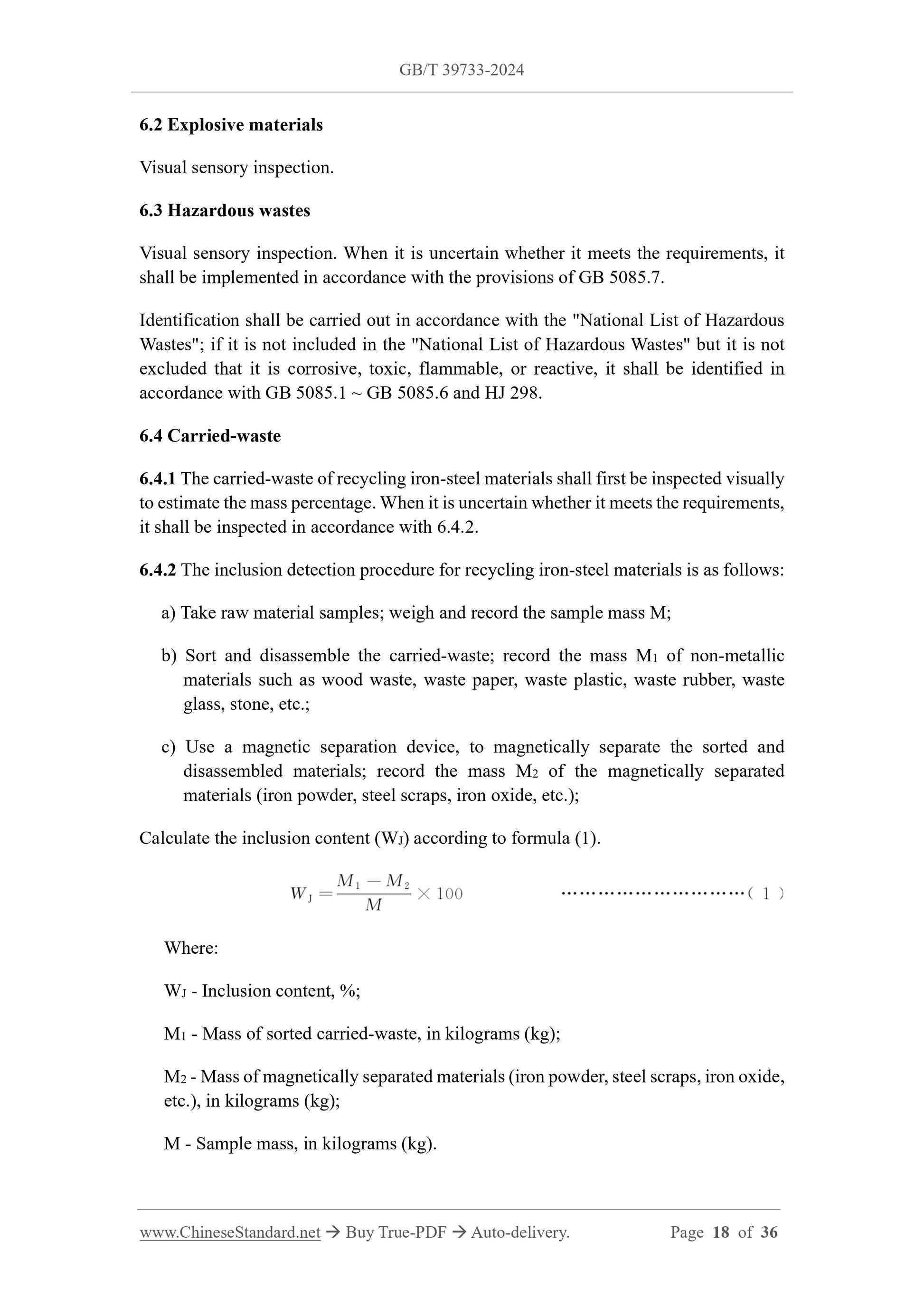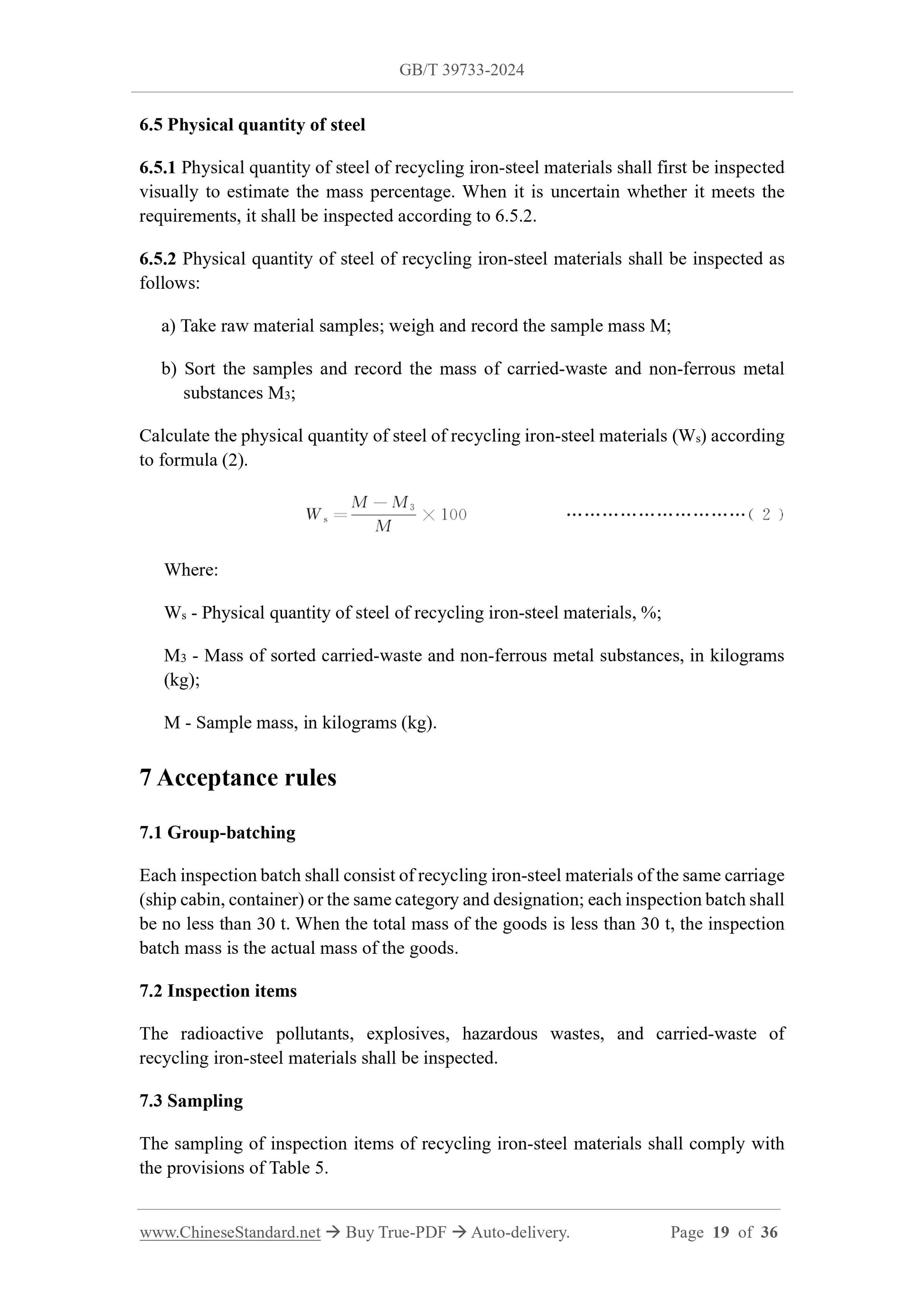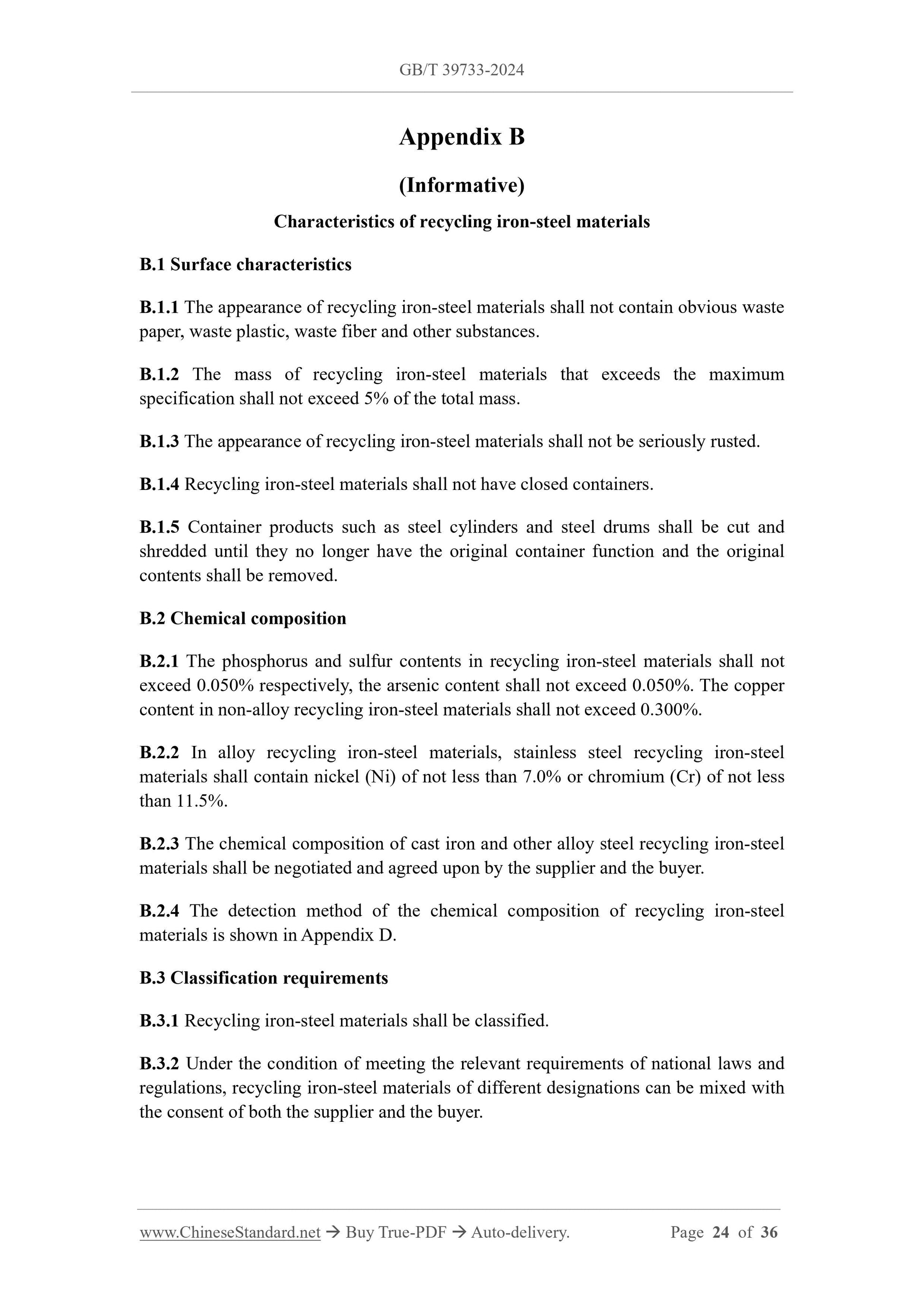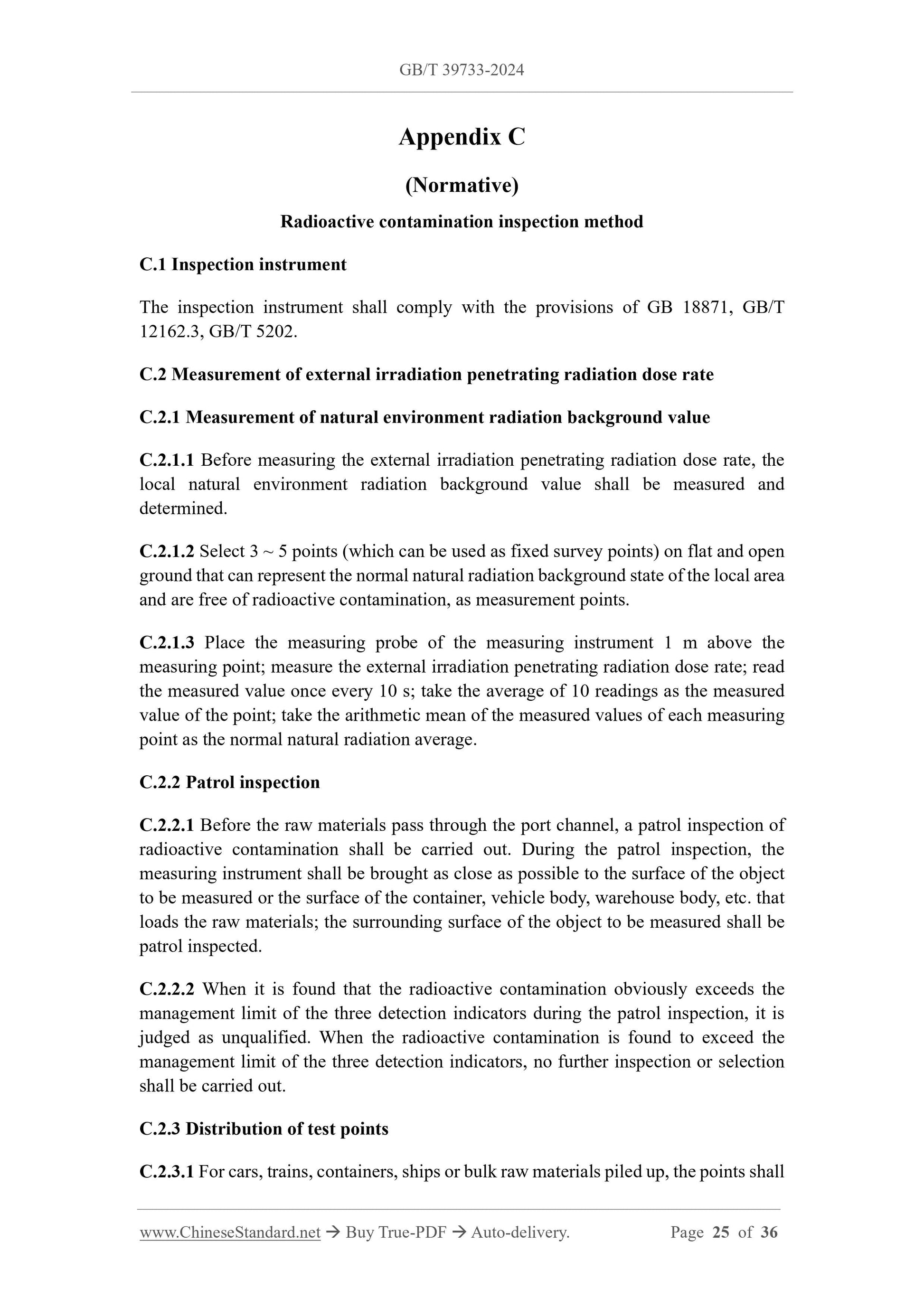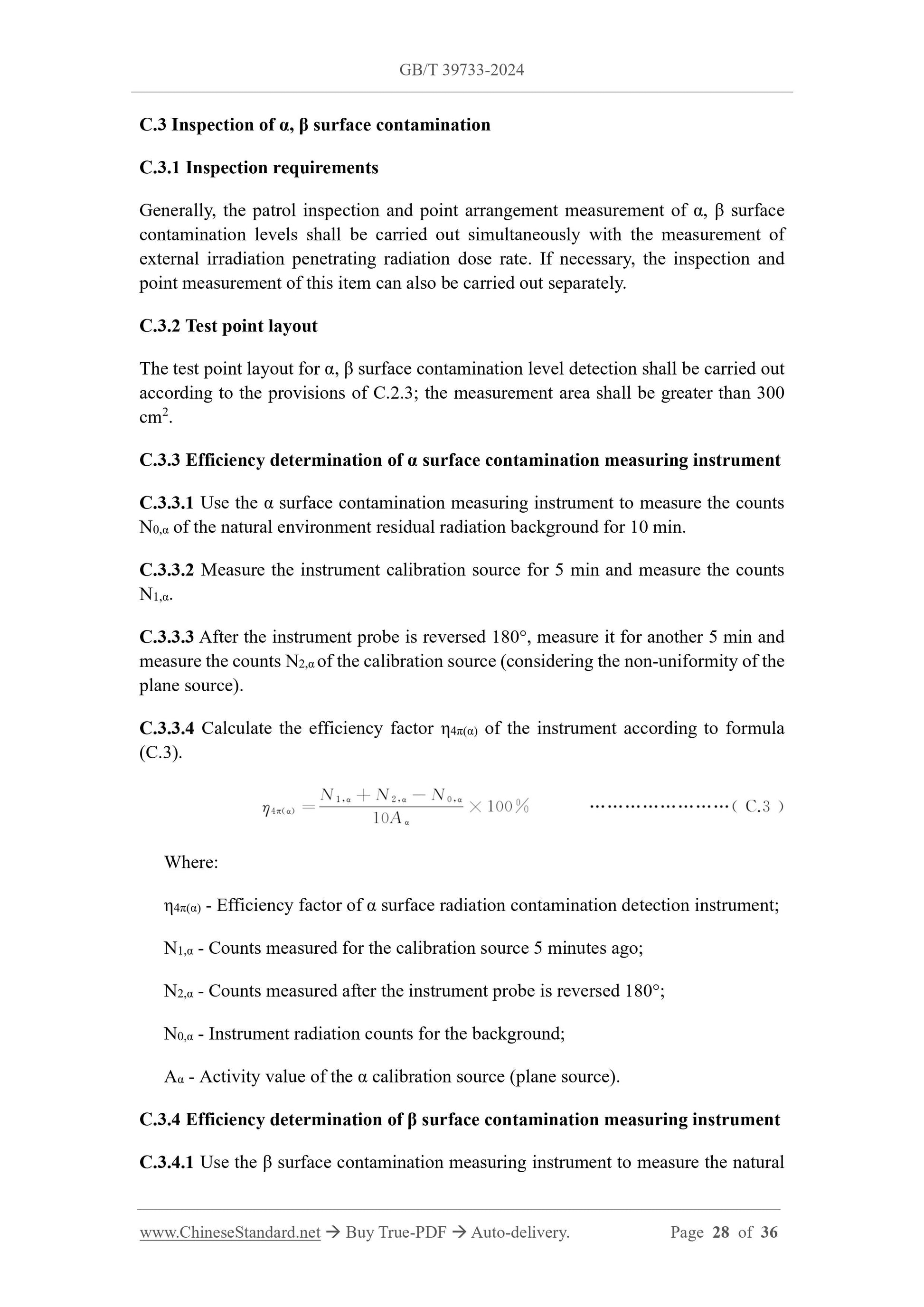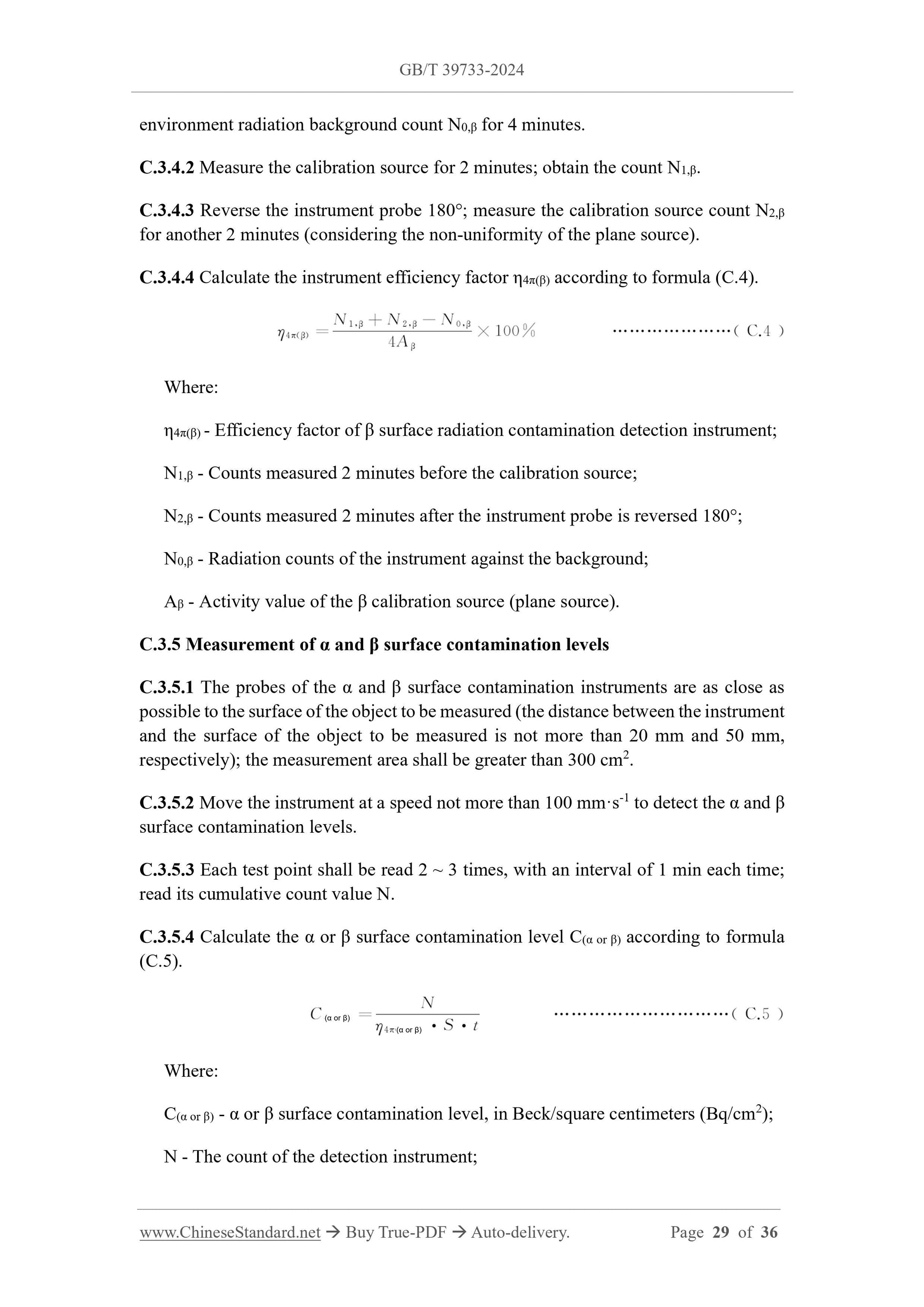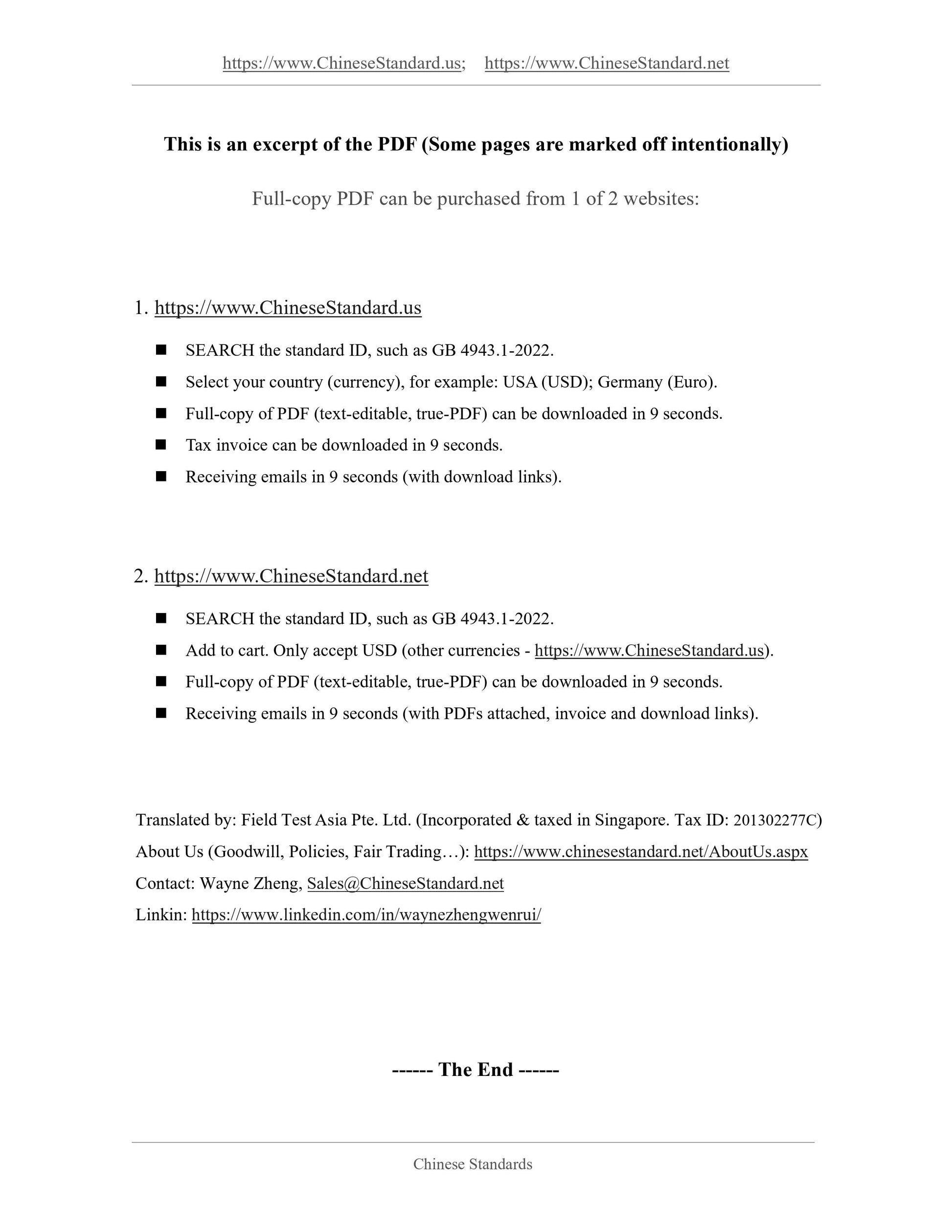1
/
of
10
www.ChineseStandard.us -- Field Test Asia Pte. Ltd.
GB/T 39733-2024 English PDF (GB/T39733-2024)
GB/T 39733-2024 English PDF (GB/T39733-2024)
Regular price
$440.00
Regular price
Sale price
$440.00
Unit price
/
per
Shipping calculated at checkout.
Couldn't load pickup availability
GB/T 39733-2024: Recycling iron-steel materials
Delivery: 9 seconds. Download (and Email) true-PDF + Invoice.Get Quotation: Click GB/T 39733-2024 (Self-service in 1-minute)
Newer / historical versions: GB/T 39733-2024
Preview True-PDF
Scope
This document specifies the classification, technical requirements, inspection methods,acceptance rules, transportation and quality certificates of recycling iron-steel materials.
This document applies to the processing and inspection of recycling iron-steel materials
used as ferrous furnace materials in ironmaking, steelmaking, casting, and ferroalloy
smelting.
Basic Data
| Standard ID | GB/T 39733-2024 (GB/T39733-2024) |
| Description (Translated English) | Recycling iron-steel materials |
| Sector / Industry | National Standard (Recommended) |
| Classification of Chinese Standard | H40 |
| Classification of International Standard | 77.140.01 |
| Word Count Estimation | 26,235 |
| Date of Issue | 2024-11-28 |
| Date of Implementation | 2025-06-01 |
| Older Standard (superseded by this standard) | GB/T 39733-2020 |
| Issuing agency(ies) | State Administration for Market Regulation, China National Standardization Administration |
Share
